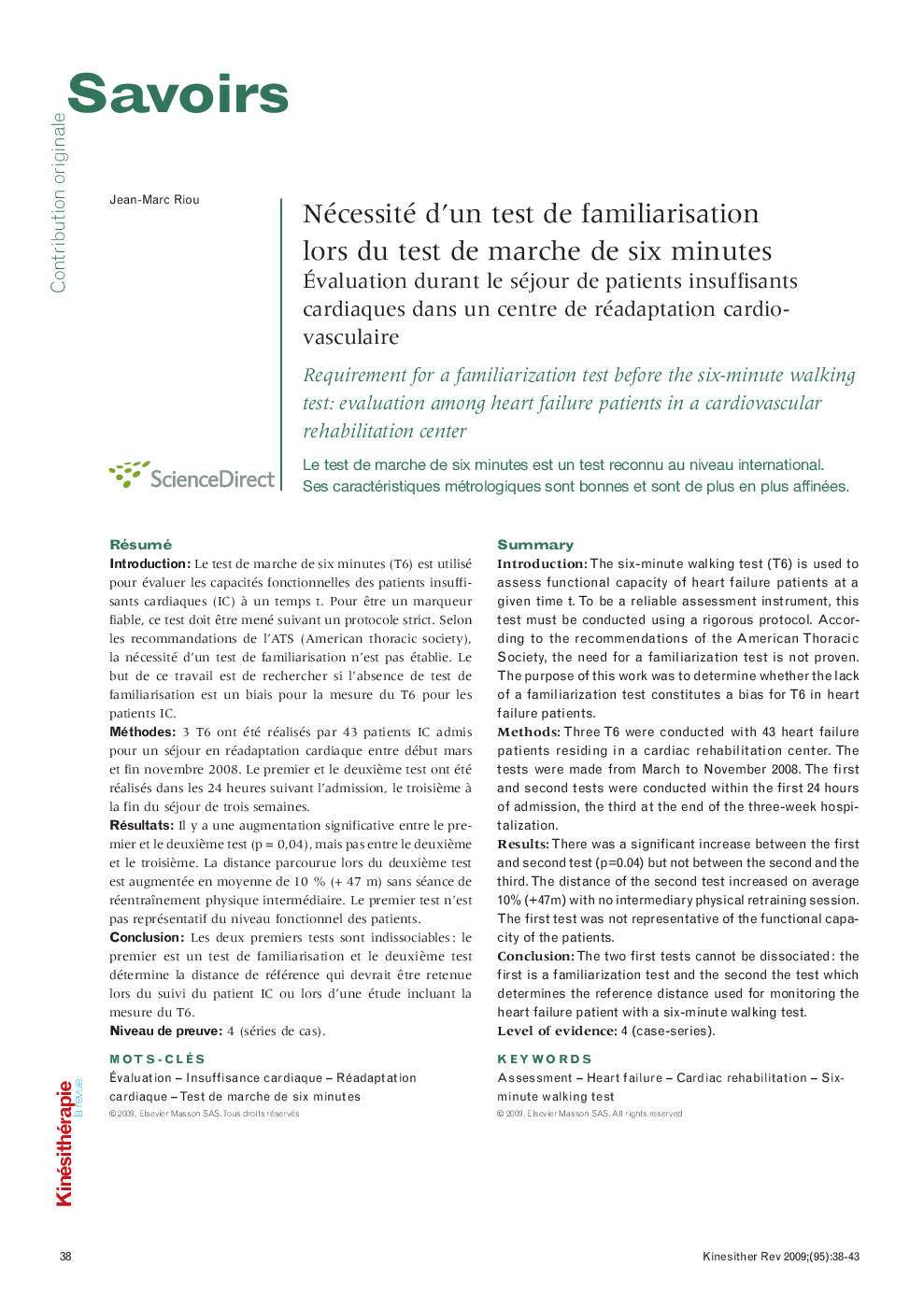| Article ID | Journal | Published Year | Pages | File Type |
|---|---|---|---|---|
| 2624360 | Kinésithérapie, la Revue | 2009 | 6 Pages |
RésuméIntroductionLe test de marche de six minutes (T6) est utilisé pour évaluer les capacités fonctionnelles des patients insuffisants cardiaques (IC) à un temps t. Pour être un marqueur fiable, ce test doit être mené suivant un protocole strict. Selon les recommandations de l’ATS (American thoracic society), la nécessité d’un test de familiarisation n’est pas établie. Le but de ce travail est de rechercher si l’absence de test de familiarisation est un biais pour la mesure du T6 pour les patients IC.Méthodes3 T6 ont été réalisés par 43 patients IC admis pour un séjour en réadaptation cardiaque entre début mars et fin novembre 2008. Le premier et le deuxième test ont été réalisés dans les 24 heures suivant l’admission, le troisième à la fin du séjour de trois semaines.RésultatsIl y a une augmentation significative entre le premier et le deuxième test (p = 0,04), mais pas entre le deuxième et le troisième. La distance parcourue lors du deuxième test est augmentée en moyenne de 10% (+ 47 m) sans séance de réentraînement physique intermédiaire. Le premier test n’est pas représentatif du niveau fonctionnel des patients.ConclusionLes deux premiers tests sont indissociables : le premier est un test de familiarisation et le deuxième test détermine la distance de référence qui devrait être retenue lors du suivi du patient IC ou lors d’une étude incluant la mesure du T6.Niveau de preuve4 (séries de cas).
SummaryIntroductionThe six-minute walking test (T6) is used to assess functional capacity of heart failure patients at a given time t. To be a reliable assessment instrument, this test must be conducted using a rigorous protocol. According to the recommendations of the American Thoracic Society, the need for a familiarization test is not proven. The purpose of this work was to determine whether the lack of a familiarization test constitutes a bias for T6 in heart failure patients.MethodsThree T6 were conducted with 43 heart failure patients residing in a cardiac rehabilitation center. The tests were made from March to November 2008. The first and second tests were conducted within the first 24 hours of admission, the third at the end of the three-week hospitalization.ResultsThere was a significant increase between the first and second test (p=0.04) but not between the second and the third. The distance of the second test increased on average 10% (+47m) with no intermediary physical retraining session. The first test was not representative of the functional capacity of the patients.ConclusionThe two first tests cannot be dissociated : the first is a familiarization test and the second the test which determines the reference distance used for monitoring the heart failure patient with a six-minute walking test.Level of evidence4 (case-series).
